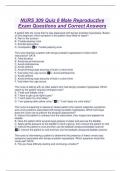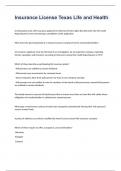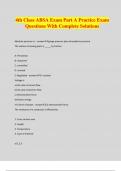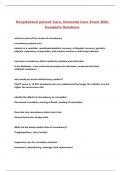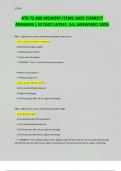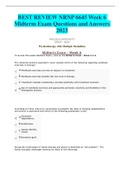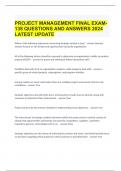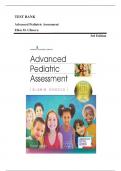Exam (elaborations)
NURS 309 Quiz 6 Male Reproductive Exam Questions and Correct Answers
- Course
- Institution
A patient tells the nurse that he was diagnosed with benign prostatic hyperplasia. Based on this diagnosis, which symptom is the patient most likely to report? A. Pain in the scrotum B. Trouble passing urine C. Erectile dysfunction D. Constipation B. Trouble passing urine The nurse teaches a patie...
[Show more]
